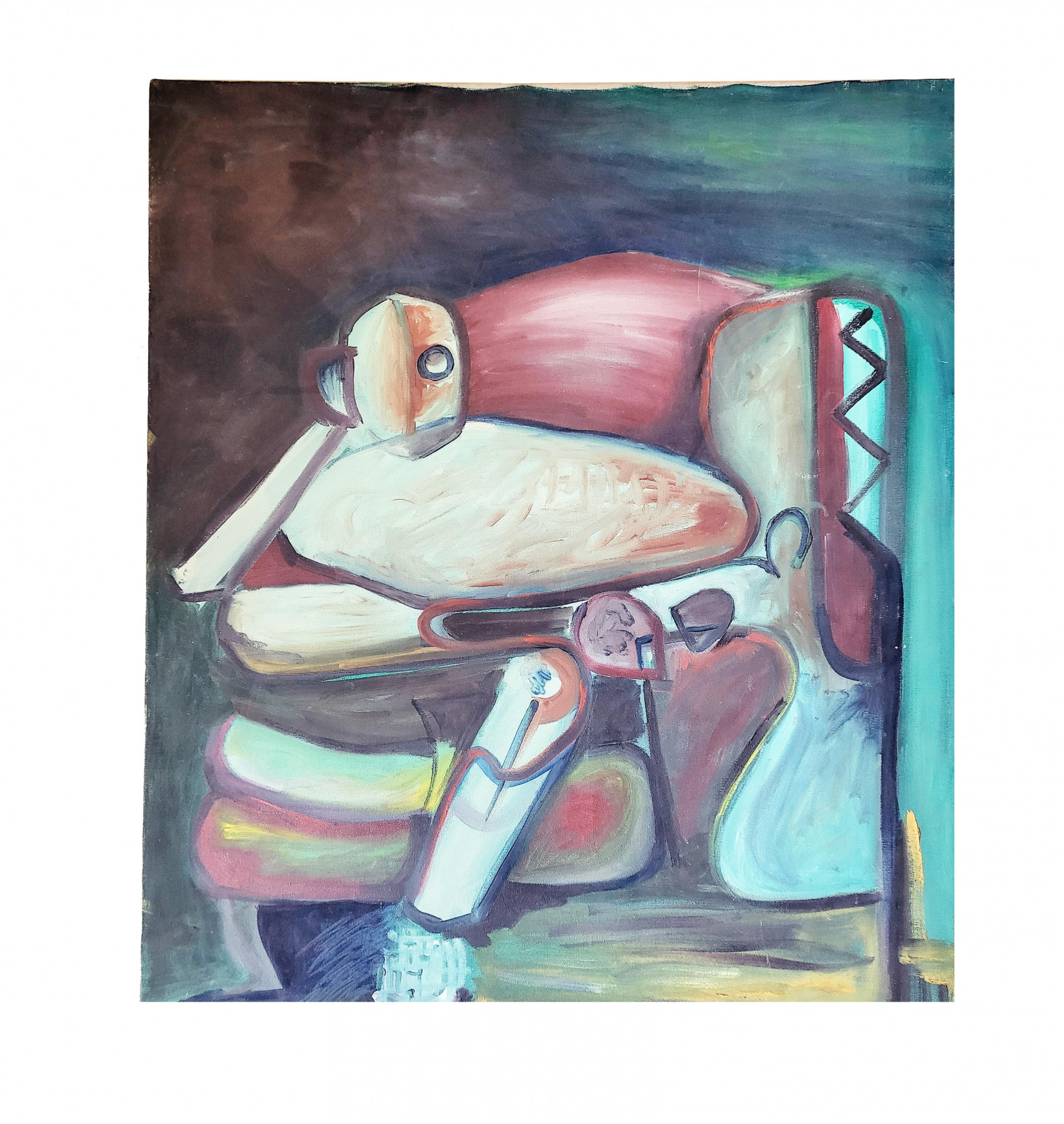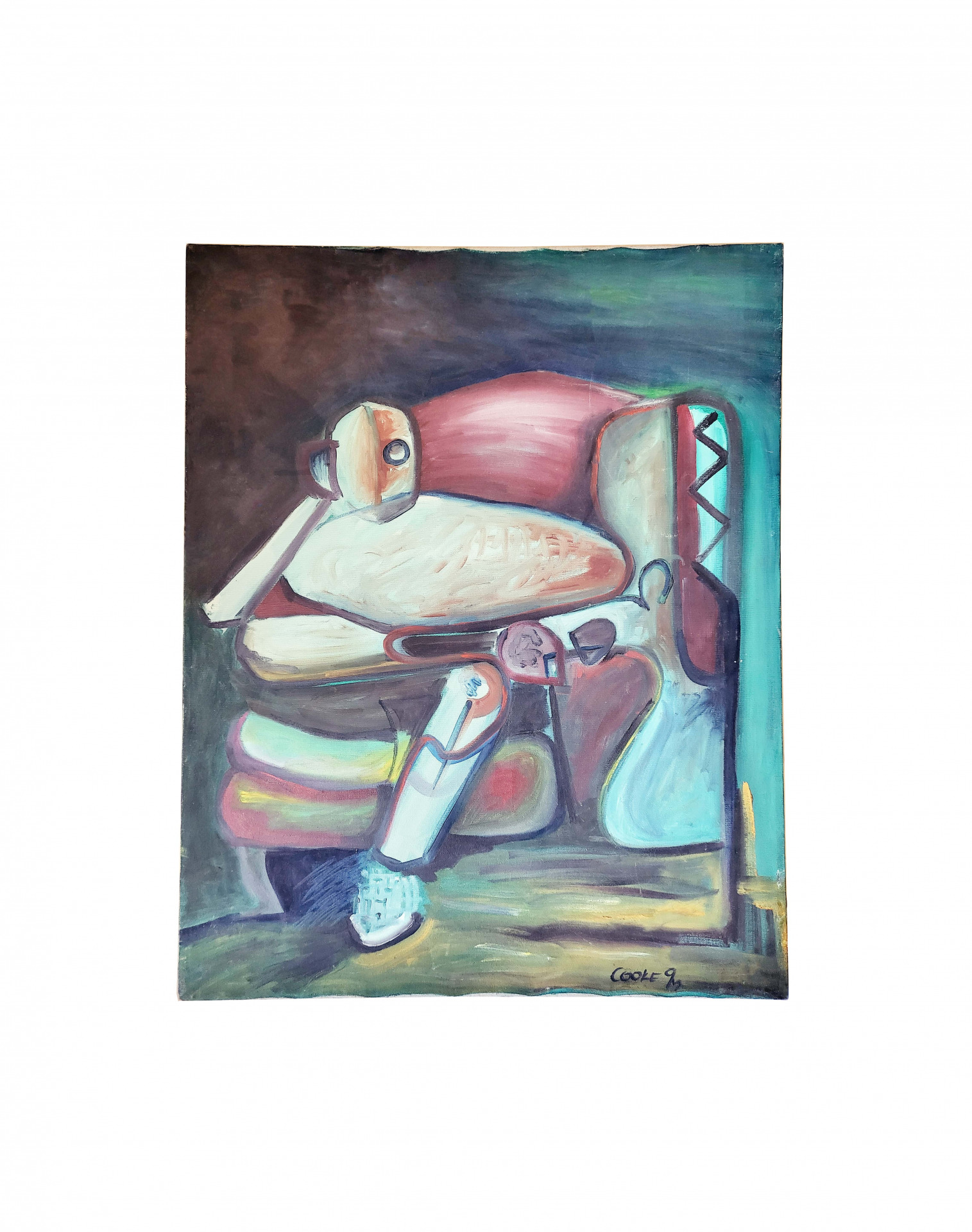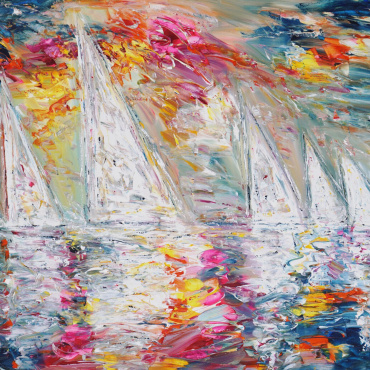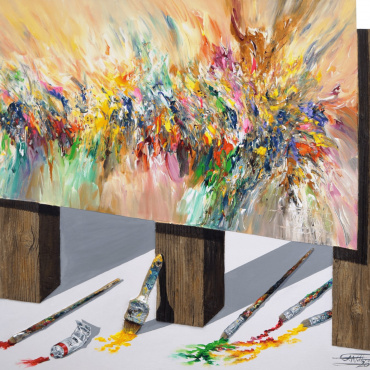Description
The painting “Man on Chair” by Eugene Cooke-Gebsite is an intriguing composition that blends abstraction and figuration. The image depicts a figure, presumably a man, in a semi-reclined position on a chair. Using muted yet somewhat vibrant colors creates a sense of depth and texture.
Color and Technique
The artist employs a palette of earthy tones interspersed with occasional bursts of more vibrant colors, such as the blue-green background. The brushwork is expressive and loose, giving the painting a dynamic and somewhat rough texture. This technique adds to the emotional impact of the artwork, suggesting a sense of movement or restlessness.
Composition and Form
The figure’s form is abstracted, with exaggerated and distorted proportions. This abstraction may symbolize the artist’s exploration of the human condition or a particular emotional state. The figure’s limbs and body parts are painted in an almost cubist manner, fragmented and angular, which challenges the viewer’s perception and invites closer inspection.
The painting’s title, “Man on Chair,” suggests a focus on the mundane act of sitting, yet the execution elevates this simple act into a complex, thought-provoking image. The distortion and abstraction might imply themes of discomfort, introspection, or contemplation. The chair, often a symbol of rest and stability, contrasts with the fragmented and uneasy depiction of the man, perhaps indicating a tension between rest and inner turmoil.
Artist’s Statement
Eugene Cooke-Gebsite’s work often explores themes related to the human experience, sustainability, and community. His background as a food justice activist and urban farmer influences his artistic practice, merging creativity with social consciousness. This piece, while not directly connected to his work in sustainable living, reflects his broader interest in the complexities of human existence and the environments we inhabit.






